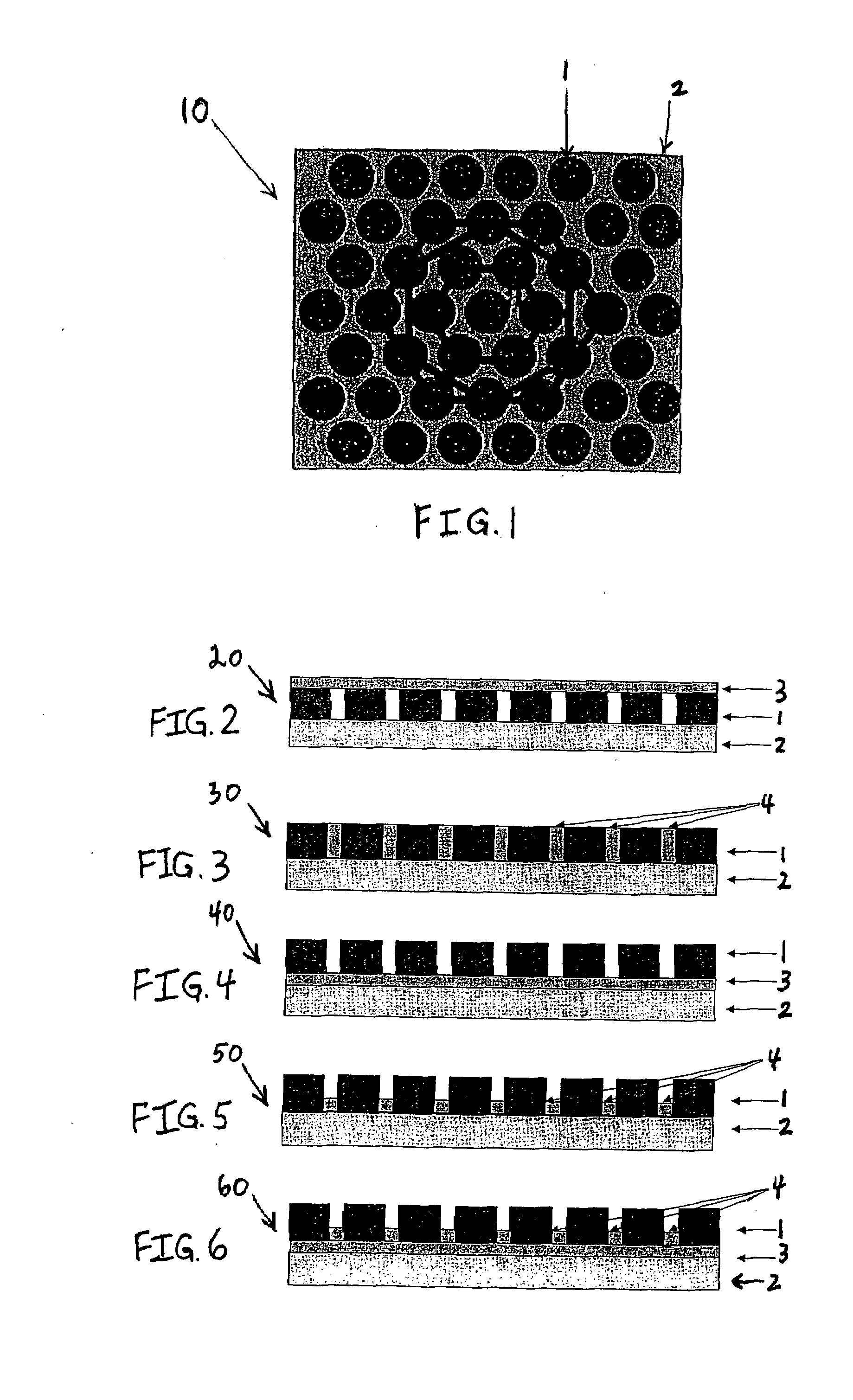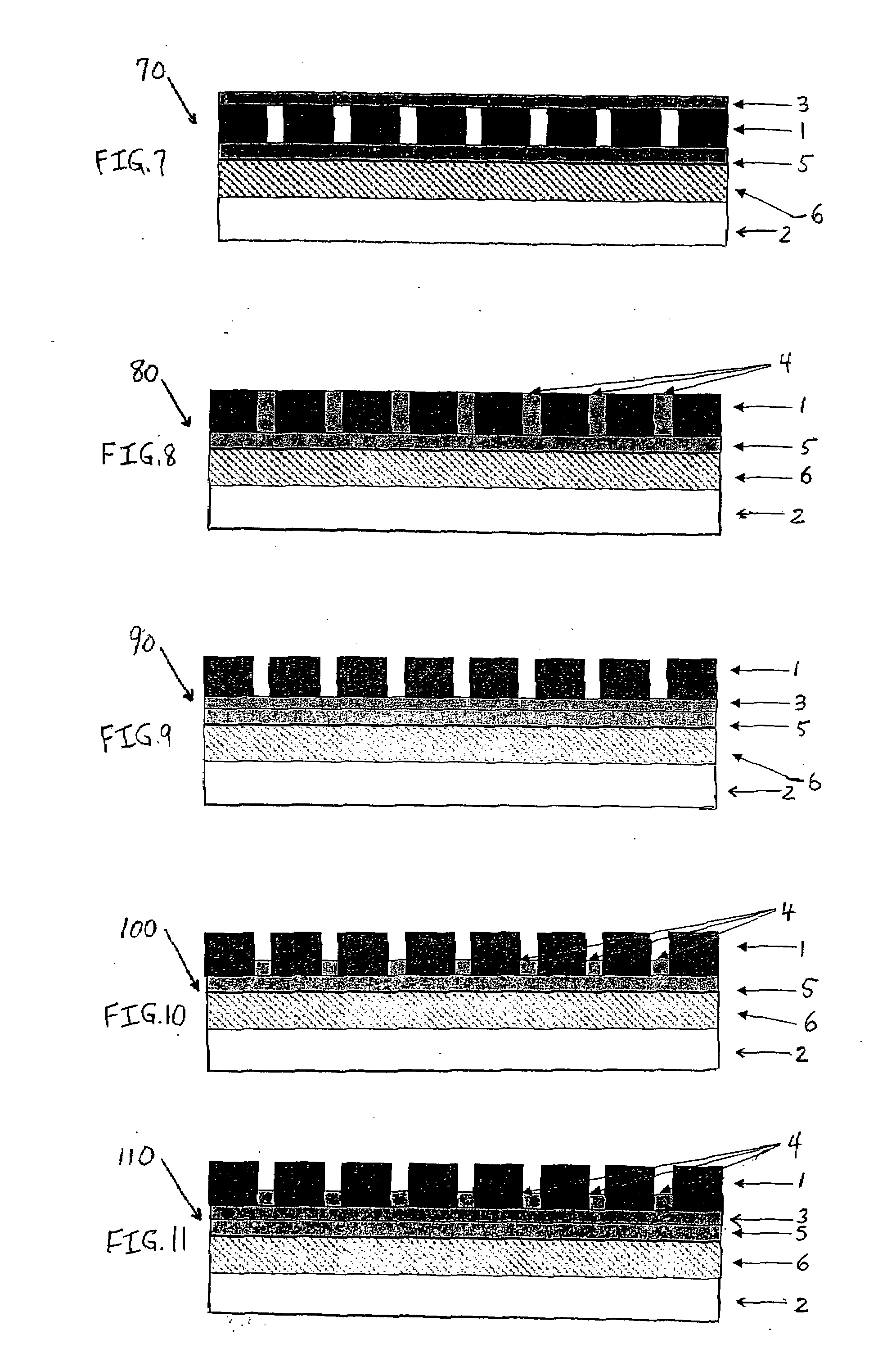Bit patterned magnetic media with exchange coupling between bits
a magnetic recording medium and bit pattern technology, applied in the field of improved bit pattern magnetic recording media, can solve problems such as noise generation during reading, errors in reading, and reading process to occur, and achieve the effects of improving stability, improving bit pattern magnetic recording medium, and reducing coercivity distribution
- Summary
- Abstract
- Description
- Claims
- Application Information
AI Technical Summary
Benefits of technology
Problems solved by technology
Method used
Image
Examples
Embodiment Construction
[0042]The present invention addresses and solves the above-described drawbacks and disadvantages associated with conventionally structured bit patterned magnetic recording media, wherein the coercivity field Hc of each magnetic element depends upon the magnetic state of the neighboring magnetic elements due to magnetostatic mutual interaction(s), including disadvantageous creation of a coercivity field distribution which causes deterioration of the magnetic performance characteristics, lowered thermal stability, and increased bit error rate (BER), while maintaining full compatibility with all aspects of conventional manufacturing technology and methodology for bit patterned media.
[0043]Briefly stated, the present inventors have determined that improved bit patterned magnetic recording media are obtainable by providing such media with a layer of a ferromagnetic material for regulating magnetic exchange coupling between the magnetic elements. The layer comprises a ferromagnetic materi...
PUM
 Login to View More
Login to View More Abstract
Description
Claims
Application Information
 Login to View More
Login to View More - R&D
- Intellectual Property
- Life Sciences
- Materials
- Tech Scout
- Unparalleled Data Quality
- Higher Quality Content
- 60% Fewer Hallucinations
Browse by: Latest US Patents, China's latest patents, Technical Efficacy Thesaurus, Application Domain, Technology Topic, Popular Technical Reports.
© 2025 PatSnap. All rights reserved.Legal|Privacy policy|Modern Slavery Act Transparency Statement|Sitemap|About US| Contact US: help@patsnap.com



